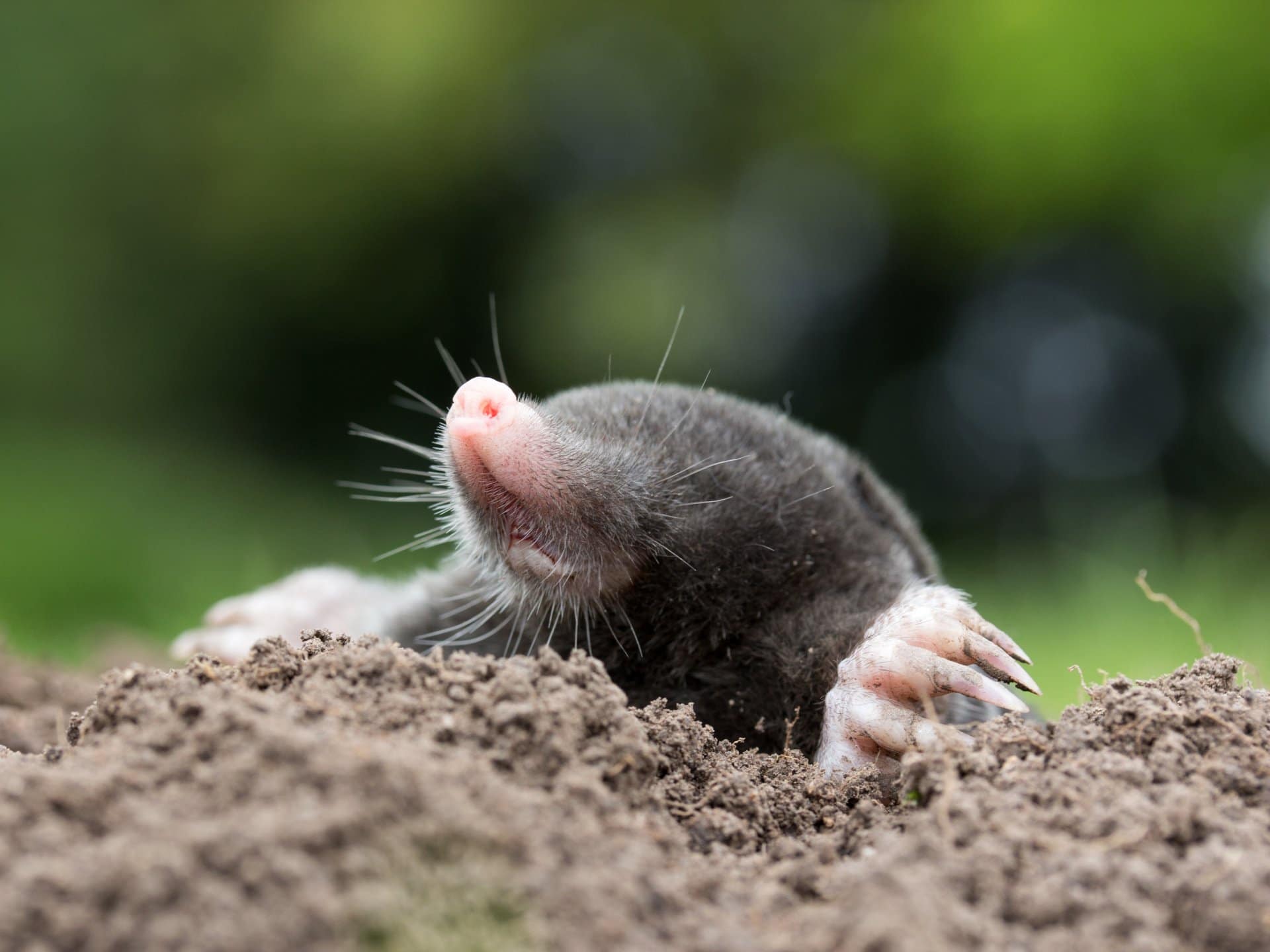So, your lawn’s looking a bit like a lunar landscape? Unexplained tunnels, mounds of dirt, or maybe even disappearing plants? You’ve likely got some unwelcome subterranean guests: moles or voles. This guide provides proven strategies to reclaim your yard and banish these pesky critters for good.
Identifying the Culprits: Mole vs. Vole
Before launching your counter-offensive, proper identification is key. Misidentifying the enemy leads to wasted effort. Here’s how to tell them apart:
Moles: The Insectivorous Excavators
Moles are small, insectivorous mammals with powerful digging claws and cylindrical bodies. They create raised tunnels and volcano-shaped mounds of dirt (molehills). Their diet consists mainly of earthworms, grubs, and other soil-dwelling insects. They’re not interested in your plants, just the bugs that live near them.
Voles: The Herbivorous Highway Builders
Voles are small rodents, resembling field mice, with short tails and rounded ears. They create surface runways through your grass and gnaw on plant roots, bulbs, and even the bark of young trees. These are the real plant predators in your garden.
Evicting the Intruders: Effective Removal Strategies
Eradicating moles and voles requires a multi-faceted approach. A combination of methods offers the most effective long-term control.
Habitat Modification: Making Your Yard Less Appealing
Disrupting their preferred environment makes your yard less attractive to both moles and voles.
- For Moles: Maintain moist soil by regular watering. Moles prefer drier conditions for digging.
- For Voles: Keep grass mowed short, remove leaf piles, thin out dense vegetation, and clear away debris. This eliminates hiding places and reduces their food sources. Keep up on snow removal, as it provides cover for voles. (Source: Family Handyman – Nancy Troyano, board certified entomologist)
Repellents: Deterring with Scents and Sounds
Repellents can be natural or manufactured, creating an unpleasant environment for the pests.
- Natural Repellents: Consider planting daffodils, marigolds, castor beans, and alliums, as some believe these emit odors that moles and voles find offensive. (Source: Better Homes & Gardens) Some gardeners also suggest using coffee grounds or placing used kitty litter in tunnels. The effectiveness of these methods is debated.
- Manufactured Repellents: Granular repellents containing castor oil or ultrasonic devices that emit high-frequency sounds are available. While some studies suggest they may be effective, results can vary.
Trapping: A Targeted Approach
Trapping can be highly effective, especially for localized infestations.
- Mole Traps: Several types of mole traps exist, including scissor, harpoon, and choker traps. Place traps in active tunnels, identified by fresh mounds or raised ridges.
- Vole Traps: Standard mouse traps or live traps (for relocation) baited with peanut butter, apple slices, or rolled oats, placed along runways or near burrow entrances, can be effective.
Barriers: Creating Physical Obstacles
Barriers prevent access to specific areas of your yard.
- Hardware Cloth: Bury galvanized hardware cloth, a fine wire mesh, around garden beds or individual plants to prevent tunneling and root damage.
- Gravel: A layer of gravel beneath patios or walkways may deter moles.
Integrated Pest Management (IPM): The Long-Term Solution
IPM combines multiple methods for the most effective and sustainable control. For example, modify the habitat, use traps to remove existing pests, and employ repellents to discourage newcomers.
DIY vs. Professional Help
For minor infestations, DIY methods can be successful. For widespread or persistent problems, consider professional pest control services. They have specialized knowledge and access to more potent control methods.
Prevention: Keeping Your Yard Pest-Free
Maintaining a tidy yard, regular tilling, ongoing monitoring, and understanding your soil type are crucial preventative measures.
| Method | Moles | Voles |
|---|---|---|
| Trapping | Specialized mole traps | Mouse traps, live traps |
| Repellents | Castor oil mix, commercial repellents | Castor oil mix, commercial repellents |
| Exclusion | Less effective | Buried wire mesh fencing |
| Habitat Modification | Grub elimination, regular tilling | Short grass, weed/debris removal, snow removal |
Will Irish Spring Soap Keep Moles Away?
The Irish Spring soap method, a popular home remedy, suggests that its strong scent repels moles. However, scientific evidence supporting this claim is lacking. The theory is that the scent, primarily from the now-phased-out antibacterial agent triclocarban, irritates moles’ sensitive noses.
The Science (or Lack Thereof)
While anecdotal evidence exists, no peer-reviewed studies confirm Irish Spring’s effectiveness. Its efficacy remains debated.
How to Use It (If You Choose To)
Burying chunks of Irish Spring near tunnels is the common practice. Results vary depending on factors like soil type and mole species.
A Holistic Approach
Rather than relying solely on Irish Spring, consider integrating it with other proven strategies like traps, castor oil, or habitat modification.
What Will Kill Voles Fast?
For swift vole elimination, trapping, baiting, and repellents offer fast-acting solutions.
Vole Identification and Damage
Voles are small rodents that create surface runways and damage plants by consuming roots, bulbs, and bark. They can also carry diseases and parasites.
Fast-Acting Control Methods
- Trapping: Use snap traps or mouse traps baited with peanut butter, oats, or apple slices along runways or near burrows.
- Rodenticides: Use poison baits with extreme caution, following label instructions precisely, especially with pets or children present. Consider combining rodenticides with other methods for increased effectiveness.
- Repellents: Commercial repellents containing castor oil or predator urine may offer quick, albeit temporary, results.
Long-Term Vole Prevention
Maintain short grass, remove ground cover and debris, and consider using hardware cloth barriers around vulnerable plants. Ongoing repellent use can deter their return. For more information on Zuhr prayer, see how many rakats in zuhr.
| Method | Pros | Cons |
|---|---|---|
| Trapping | Effective for small infestations, affordable | Can be time-consuming, may not eliminate entire population |
| Rodenticides | Effective for larger infestations | Potential hazards to pets/children, requires extreme care |
| Repellents | Fast-acting, generally safe | Effectiveness can vary, might need reapplication |
| Habitat Modification | Long-term preventative solution | Can be labor-intensive |
| Professional Control | Comprehensive, tackles tough infestations | Can be more expensive |
Remember, complete eradication is challenging. The goal is to manage populations and minimize damage. Ongoing research continually explores new and improved control methods. Choosing an integrated approach, considering humane treatment, and adapting your strategy are crucial for long-term success.
- Crypto Quotes’ Red Flags: Avoid Costly Mistakes - June 30, 2025
- Unlock Inspirational Crypto Quotes: Future Predictions - June 30, 2025
- Famous Bitcoin Quotes: A Deep Dive into Crypto’s History - June 30, 2025
















